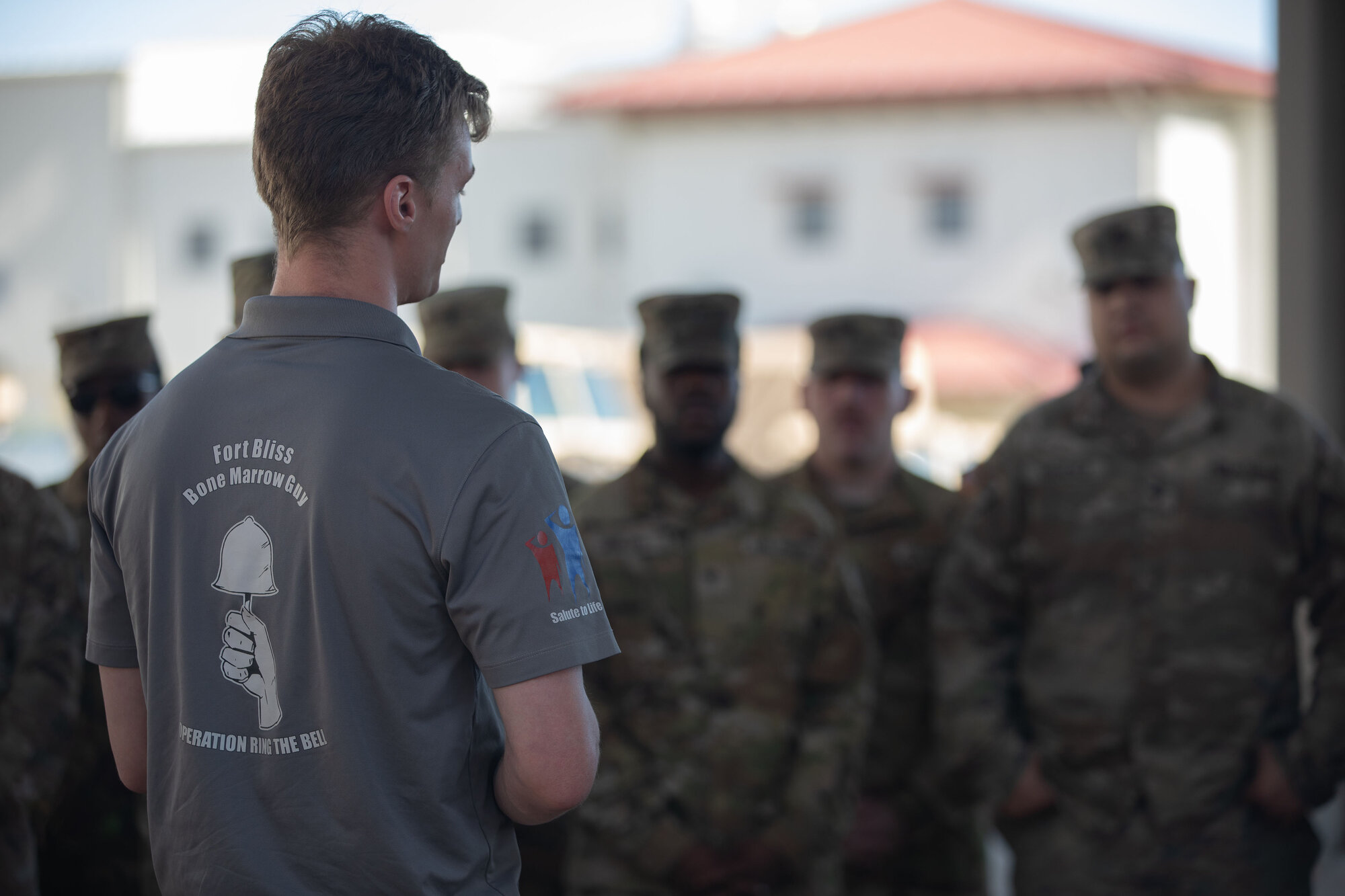Operation Ring the Bell: A life-saving mission at Fort Bliss
24th Theater Public Affairs Support Element
"Save the life of a fellow American, whether in uniform or not!"
This simple yet powerful message was the driving force as more than 4,000 U.S. Army soldiers volunteered and registered into the Department of Defense's bone marrow donor program "Salute to Life" during a two-week bone marrow drive held across multiple locations and units at Fort Bliss, Texas, from Aug. 5-16.
This effort was the latest success story for the soldier-led call to action campaign dubbed "Operation Ring the Bell."
This drive is considered to be the largest bone marrow registry drive in the history of the U.S. Army, reaching thousands of soldiers on the vast west Texas U.S. Army installation.
The soldier behind the campaign is U.S. Army Spc. Christian Sutton, a native of Sumter, who serves as a satellite communications system operator-maintainer assigned to Headquarters and Headquarters Battalion, 1st Armored Division.
Sutton's ultimate goal is to raise awareness of the Salute to Life program and transform how the U.S. Army integrates the process within its organic systems to increase access and donations to these life-saving drives, thereby saving exponentially more lives.
"Operation Ring the Bell is a campaign to modernize and invigorate the Salute to Life Program, especially within the U.S. Army," Sutton explained. "It's important to me because it's an opportunity to directly impact and change both the military and my country - to save lives."
Sutton and his team of volunteers partnered with Mr. Chad Ballance, a senior recruiter for DOD's Salute to Life program. Ballance echoed Sutton's sentiment, emphasizing the U.S. Army's potential to significantly contribute to this life-saving movement.
He noted the impact would be profound if initiatives like "Operation Ring the Bell" were institutionalized and integrated into the U.S. Army's training and readiness procedures.
Much like Sutton, Ballance has a passion to educate others and spread the word about the importance of bone marrow donors.
"What got me started was hearing about a young child being diagnosed with a fatal blood cancer," Ballance recalled during the early years of military service. "I decided I was going to do something about that. So, I started registering as many people as I could, telling them, 'You could be somebody's cure. You could be somebody's cure.'"
His dedication to this cause was visible as he spoke to Fort Bliss soldiers about DOD's Salute to Life program.
One morning as the sun rose over Fort Bliss and hundreds of soldiers gathered, their attention was fixed on a photo raised high in the air by Ballance.
The image was of a 6-year-old girl diagnosed with a fatal blood cancer, a condition treatable through a bone marrow donation.
His message and the greater message of the campaign was clear; each soldier was offered the opportunity to make a life-changing difference in a matter of minutes.
Ballance noted the challenge of finding perfect donors is immense, but with its vast and diverse personnel, the U.S. Army represents a goldmine of potential genetic matches.
This is crucial, considering the 18,000 people diagnosed each year with life-threatening illnesses that require bone marrow transplants, including 500 within the Army itself.
Unfortunately, bone marrow drives had not been common or prioritized at Fort Bliss for several years.
However, that all changed when Sutton, along with a team of soldier volunteers, made "Operation Ring the Bell" part of the Fort Bliss community.
The 24-year-old Sutton - affectionately known across Fort Bliss as the "Bone Marrow Guy" - and his team have statistically saved 10 lives during this latest drive, offering hope to people who otherwise had little hope before.
To help save a life, a soldier can start the process by donating a DNA sample via a simple saliva swab.
The procedure is straightforward: Swab the inside of the mouth, place the swab in a sanitary envelope provided by Salute to Life, and submit it along with some basic information.
Soldiers across Fort Bliss praised the system for its simplicity and ease, a critical factor in encouraging participation.
"Once a soldier understands how simple this program is and realizes the minimal impact it would have on their body, compared to the life-saving impact they could have on someone else, they recognize that we can all make a difference," Ballance said. "And it all starts with just two swabs."
ABOUT SALUTE TO LIFE
The Salute to Life program was created to help United States Department of Defense members and their dependents become volunteer bone marrow donors.
Since its inception in 1991, it has recruited more than 1 million new potential donors and coordinated more than 8,000 cellular donations.
For more information about the program, visit its website at www.salutetolife.org.
More Articles to Read






